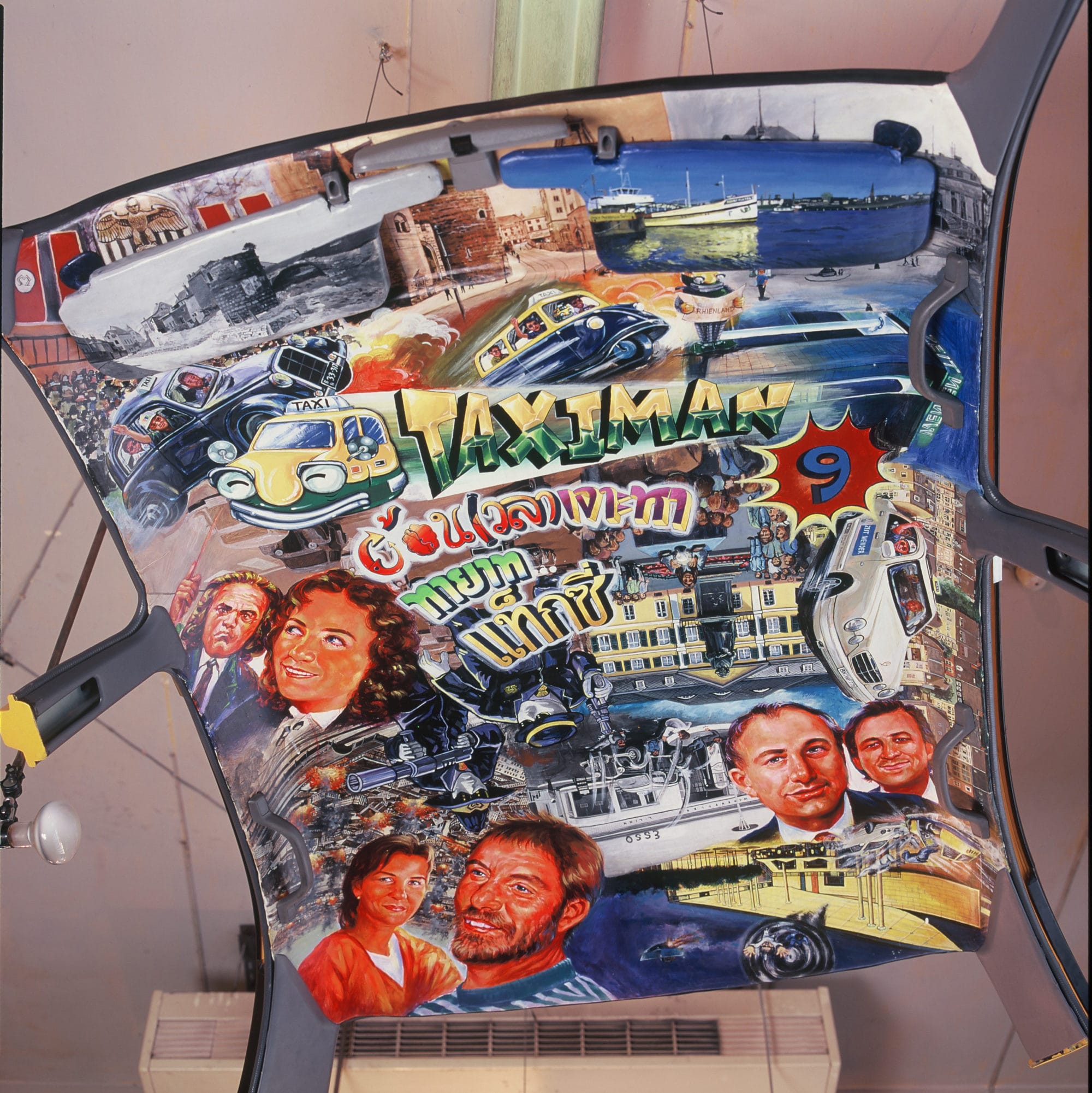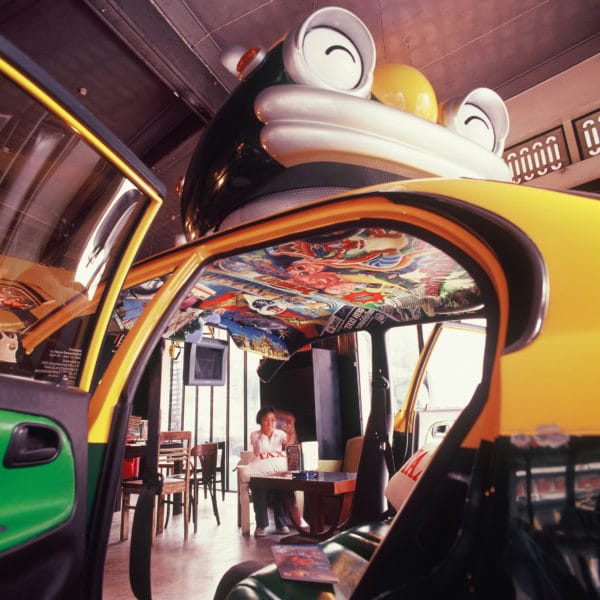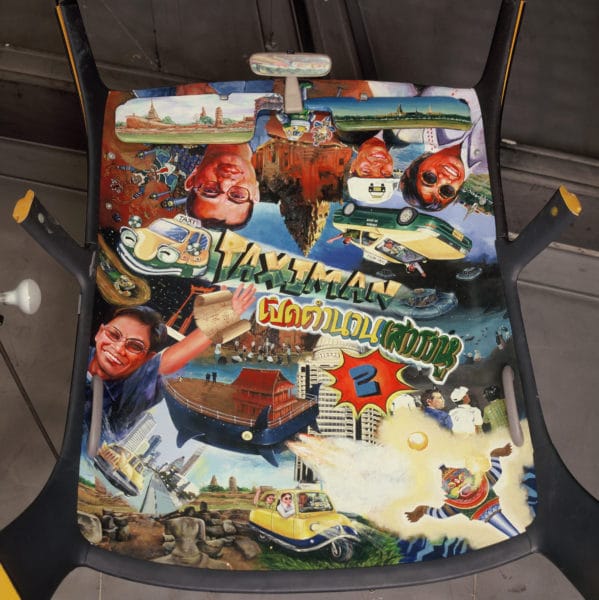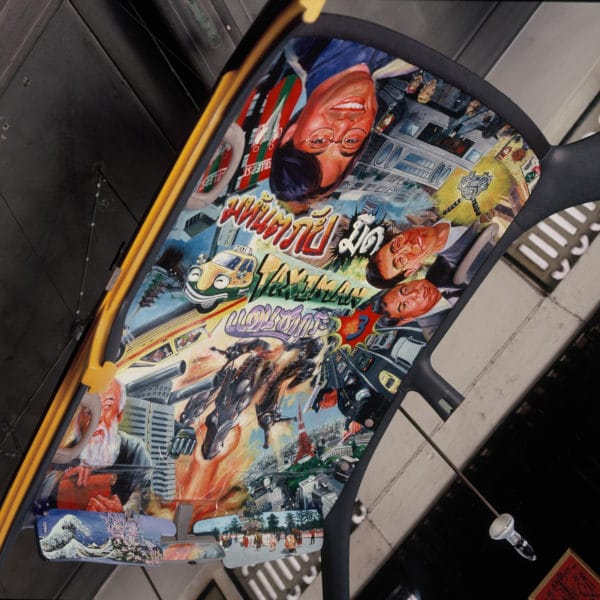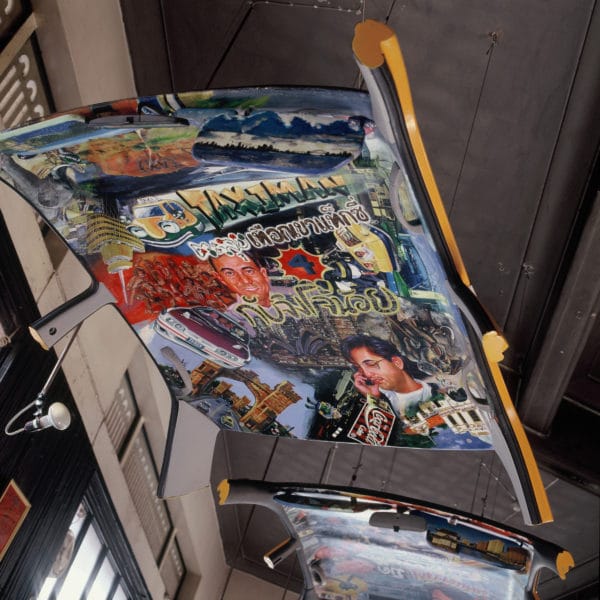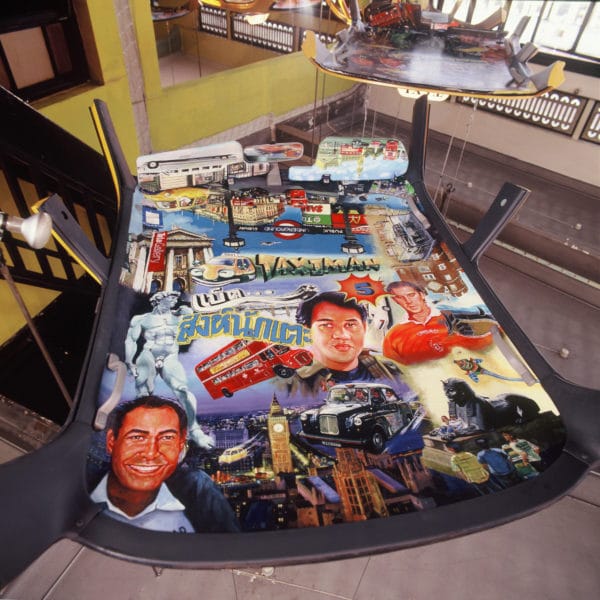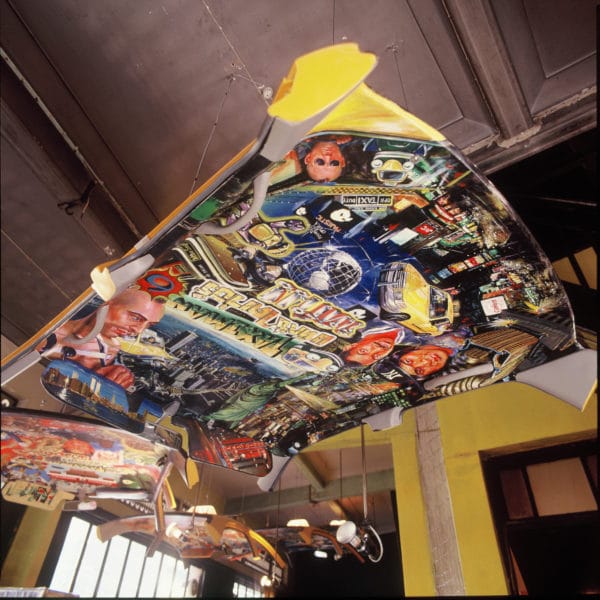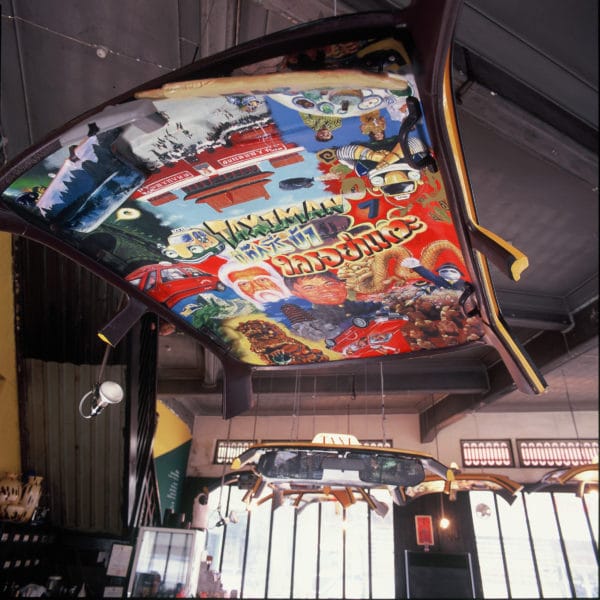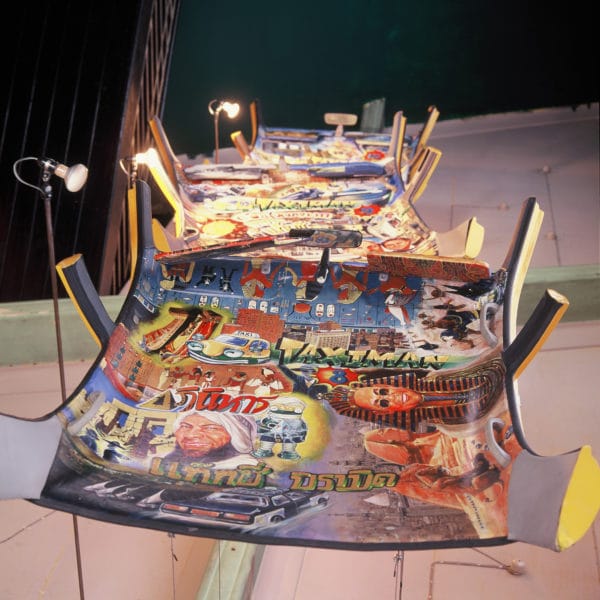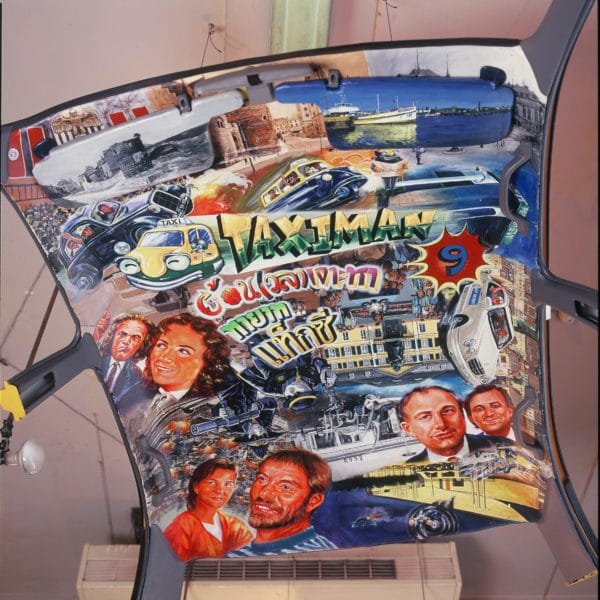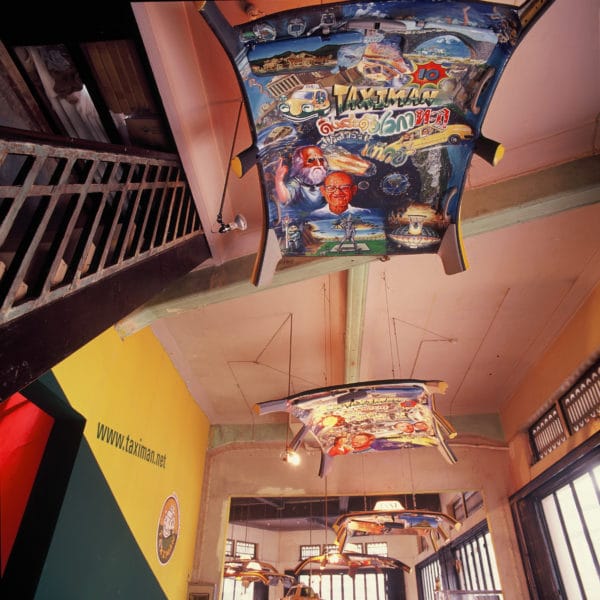Artist : Navin Rawanchaikul
Technique : Mixed media installation combined with 10 taxi roofs
Year : 2000
Size : 135 x 180 cm.
Navin Rawanchaikul was born in 1971 in Chiangmai, Thailand. A Thai-Indian artist, his artistic practice has roots in identity and public engagement. Famed for large scale projects, the artist set up a production team under the name Navin Production, a studio based in his hometown.
In 1992, Navin’s first solo show in Bangkok was disrupted by Bangkok’s horrific traffic as his audience felt the gallery was too far out of the way. This meant that the traffic would add to the travelling time which subsequently discouraged people to attend.
The thought of traffic and transportation left Navin with an idea that would eventually be developed into what is known as Navin Gallery Bangkok (1995).
Taxis as a public transport and its compact space inspired Navin to use these elements to present his new project as a way to get the art right to the audience. The artist transformed Thai taxis into mobile galleries, displaying art work on the roof of the car and around the seating area. Drivers picked up passengers around town as per normal but what was added to this everyday life routine was the presence of art work and the additional dialogues the passenger/audience may have with the driver.
This very successful project led to multiple collaborations with other artists and gained much international recognition.
Following this success, Navin produced more work woven out of the original concept by the extension of Taximan (2000) and I Love Taxi (2001).
Taximan (2000) was created as a series of cartoon where its central character, Taximan, is a superhero with a mission to save Earth. The artist recognised the important role taxi drivers play in the everyday life of Bangkokians as well as its visitors. Most of the drivers come from low-income parts of the country and so Navin admires their resilience for survival, considering them as the actual real-life heroes.
In Taximan (2000), the story centres around the Taximan character, who came to earth looking for other drivers to help fight his arch-nemesis Millennium Man. Each roof- painting is composed like a comic book cover, featuring titles of each episode and landmarks from around the world.
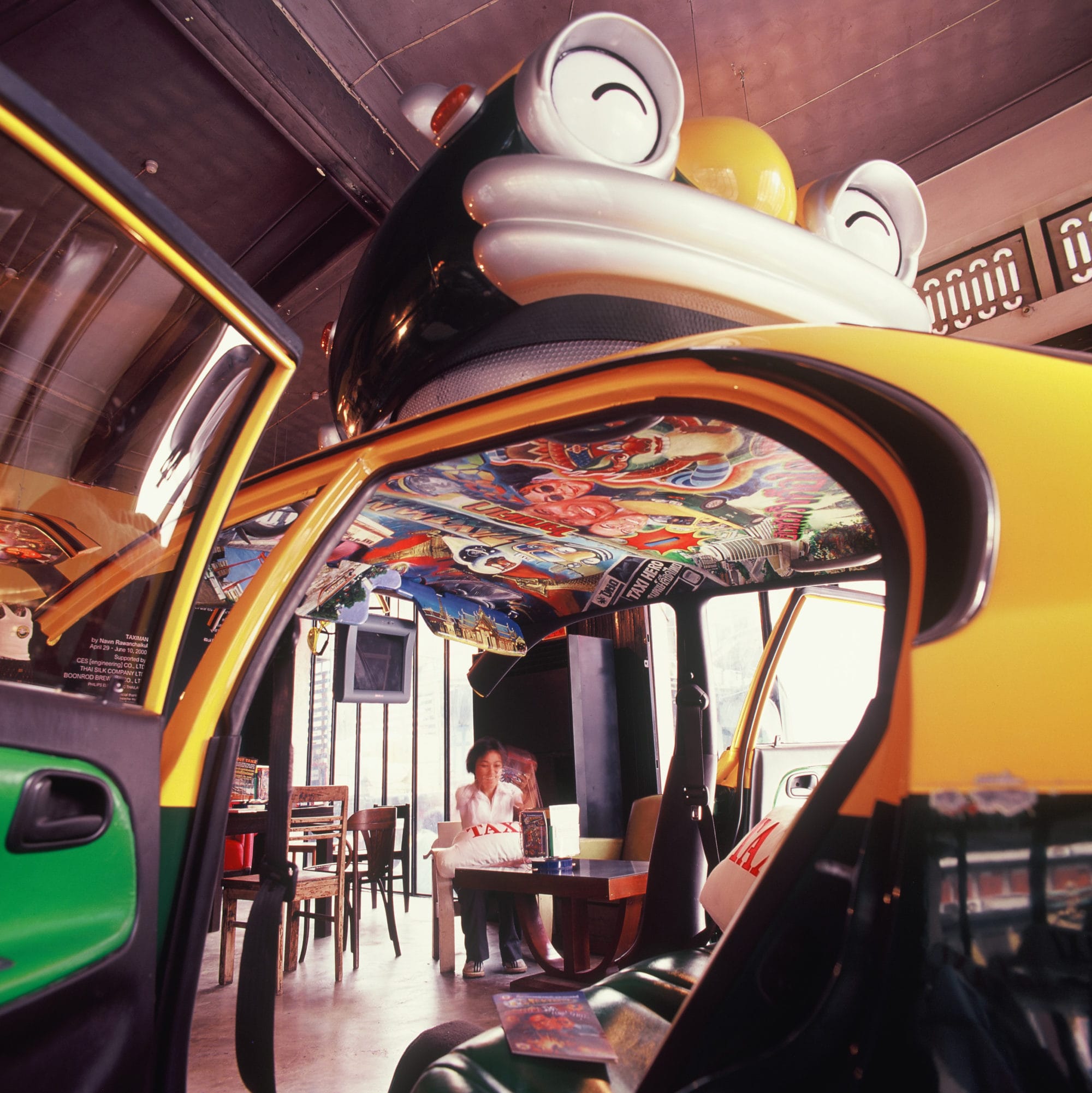
Navin Rawanchaikul has continued to explore the balance between globalisation and local narratives, borrowing from his own personal reflections or other identities. His approach to his art has always been considered to be boundary-pushing but almost always involving surrounding communities for features or participation. His artistic medium has also spread to other story-telling methods, through films, advertisement billboards and of course comic books.
